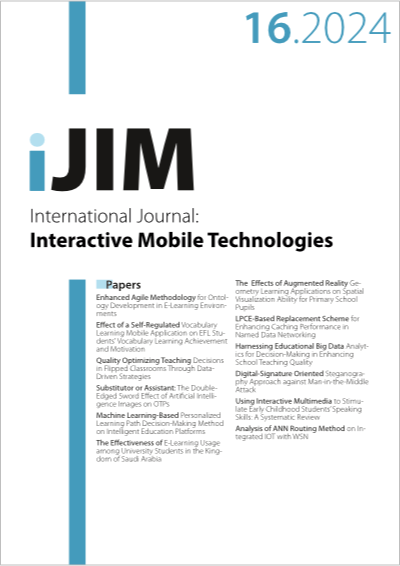Digital-Signature Oriented Steganography Approach against Man-in-the-Middle Attack
DOI:
https://doi.org/10.3991/ijim.v18i16.48709Keywords:
Digital signature, Steganography, Cryptography, LSB, EdDSA, AES, Man-in-the-middle AttackAbstract
Nowadays, man-in-the-middle (MITM) attacks have become a large problem due to the advancement of computational power and interactive mobile technologies. Message security is a crucial concern that ought to be managed in order to help protect vital data from unauthorized people, such as MITM. Steganography is the technique of hiding secret data within an ordinary, non-secret file or message in order to avoid detection when communicating through an unsecured network. Steganography applications play a vital role in various fields that involve classified data transfer, such as healthcare, multimedia, and the military. Hence, the application of steganography in those fields attracts MITM attacks. Thus, in an attempt to address the challenge. This study proposes a hybrid approach that integrates an image steganography technique, the Advanced Encryption Standard (AES) for message encryption, and EdDSA (Edward-Curve Digital Signature Algorithm) for signature verification to enhance steganography against MITM attacks. The proposed hybrid approach was tested and measured using image metrics (MSE, PSNR, and SSIM) and histogram visualization and verified through experimentation. The results have proven that the proposed hybrid approach is an enhanced security approach with low execution time, more payload size for hiding messages, and a high invisibility embedded message to MITM compared with other existing approaches. This study has potential limitations. It does not explore tamper resistance or algorithm robustness, and it was not tested on a public image dataset.
Downloads
Published
How to Cite
Issue
Section
License
Copyright (c) 2024 GWAMAKA HENRY MWAKAJWANGA, Dr Othmar Mwambe

This work is licensed under a Creative Commons Attribution 4.0 International License.



